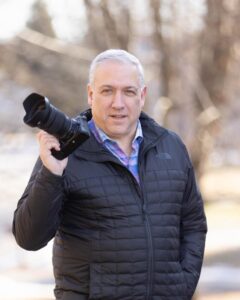 Where do you live?
Where do you live?
I am a life-long Rhode Islander. I currently live in Smithfield, RI, the village of Greenville to be a bit more specific. I was born and raised in Barrington and graduated from URI.
How long have you been a member?
Probably about 8 years, I can’t think of exactly when I joined.
Do you currently volunteer?
I just finish a 2-year term on the board of directors where my primary focus was pulling together the 5-year strategic plan for WAA and I also volunteer at the festival.
How long have you been a JAM?
That I remember, 5 years. Right after I completed the certificate program at RISD in photography I submitted my final portfolio for consideration to be a JAM. The project was a series of long exposure, black and white photographs of the lighthouses.
How would you describe your artwork?
My work generally falls into three genres: landscape, street photography and macro/still-life/abstract. At least for landscape, my work has evolved to where I am trying to get away from taking a photo depicting a scene and be more focused on creating a sense of space and time. My street photography continues to be a work in progress as does my macro work. I think I am still finding myself with the latter two.
From where do you find your inspiration?
There are several places where I get my inspiration. First and foremost, Ansel Adams. He was the first landscape photographer I became aware of and his work still inspires me today. I enjoy walking galleries of museums such as the Met in NYC and the MFA in Boston and looking at the work of the masters. I especially like the landscape painters from the Hudson Valley School such as Church and Bierstadt. Lastly I find inspiration from watching YouTube photographers. There are many out there but three in particular have been especially impactful; Alister Ben, Thomas Heaton, and Ben Horne.
What is the most important thing that you want viewers to take away from your artwork?
A sense of space and scale. When I look at the New England landscape, especially the coast, it has been photographed countless times by other photographers. I try to differentiate my work by creating a sense of scale and time. I do this by using long shutter speeds and wind angle compositions that tend to minimize the subject, such as lighthouses, and maximize the environment, such as the sea and sky. As I look at my street photography, I think it is trending in the same direction, showing my subjects in the broader context of the urban environment.
What is the best piece of advice you’ve ever received?
This bit of advice came from two instructors in the RISD program, Lindsey Elgin and John Hames. It was to look at your artwork as a body of work and not as a collection of discreet pieces. Frankly, that shift in mindset was life changing for me. It really pulled me out of taking snapshots and pushed me to creating art.
What is the most important skill you should have as an artist?
From a photography perspective it is understanding composition and light. A bad composition will not be saved by good light and conversely, a good composition will be ruined by bad light.
What is your favorite thing about the Wickford Art Association/ about being a member?
The inspiration I get from being around such a talented group of artists. Whenever I come back from the gallery I feel energized and want to grab my camera and create.
What do you enjoy most about your artistry/being an artist?
The creative process, especially being outside with my camera. It doesn’t matter if it is beach or the streets of New York, I feel energized when I am taking photos.
Do you have any upcoming shows?
Yes, I’ll have a few pieces in the upcoming JAM invitational.
